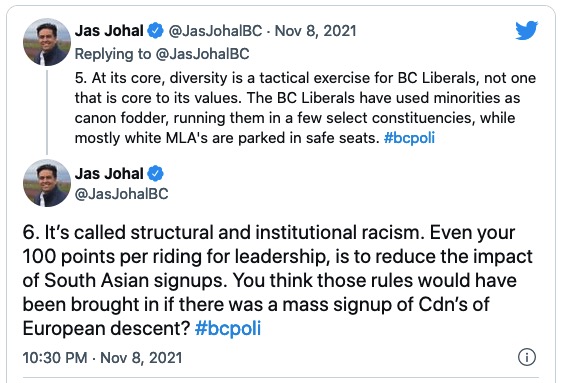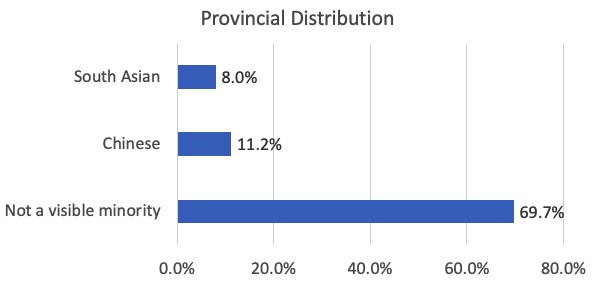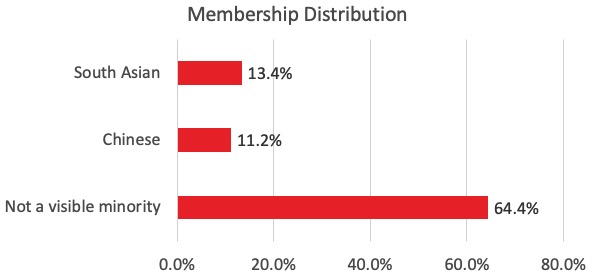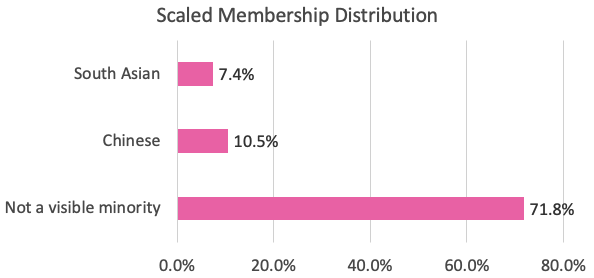2018 BC Liberal Leadership Demographic Skew
28 Nov 2021A couple weeks ago, former BC Liberal MLA and current radio host Jas Johal delivered an epic twitter rant trashing his former party’s record on diversity.

Among other things, he pointed out the distinctive rule the 2018 BC Liberal leadership contest was run under, which granted 100 points for each riding in the province and distributed those points based on the votes within each riding.
Even your 100 points per riding for leadership, is to reduce the impact of South Asian signups.
The net effect of the “100 point rule” is a “one riding one vote” system, rather than a “one person one vote” system.
For those of you joining from outside BC: the South Asian community in BC has an admirable history of political engagement and can wield outsize influence in contests (like leadership elections) which place a premium on signing up and activating new party members. Because the community is concentrated in a few regions, this extra activity results in a some ridings having a lot of new members during leadership contests. Normalizing votes on a per-riding basis has the effect of devaluing votes in these highly active ridings.
Johal’s rant made me wonder though: sure, the (often unspoken) conventional wisdom was that the point system devalued South Asian votes, but in the final analysis, did it?
Incredibly, the riding-by-riding vote results for the 2018 BC Liberal leadership contest are all available in Wikipedia, so it is possible to do a loose analysis.
We cannot know exactly what the visible minority make-up of the BC Liberal membership was in 2018, but we can approximate it by using the 2016 Census profiles for the ridings.
The three largest visible minority categories in BC for 2016 were “Not a visible minority”, “Chinese”, and “South Asian”, so I did analyses for these three groups.
Here’s the overall provincial distribution of those three visible minority categories:

Here’s the distribution of those categories within the BC Liberal membership, calculated by weighting using the riding level distributions against the membership in each riding:

And here’s the scaled BC Liberal membership distribution, where each riding is given equal weight, as in the 100-point leadership vote counting rules.

So, yeah, Johal wasn’t just making this up, the 100-point system is not only anti-democratic in conception (“one vote per riding” instead of “one vote per person”), the system disadvantages the South Asian community in particular.
Having done this lightweight analysis, it is super tempting to try and figure out the counter-factual–who would have won the 2018 leadership under a one-member-one-vote rule–but unfortunately that’s not possible with the data available.



